1 ½ cups warm water
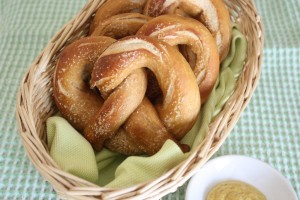
1 tbsp of mascavo/muscavado sugar
1 tsp sea salt
1 pk active dry yeast (I used rapid rise)
4 cups white whole wheat flour
4 tbsp unsalted butter, melted
10 cups water
2/3 cup baking soda
1 egg yolk, beaten
1 tbsp water
Olive oil
Salt or other seasoning
Eating these lovely treats is a far cry from a sacrifice, which is what I usually associate with the Lenten season. So that is why I think I’ll stick with the name “pretiola.” I will gladly take these as a little reward any time of year.
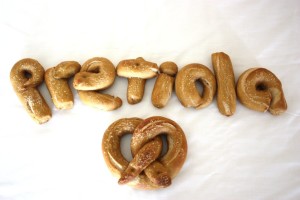
Resources for more info about pretzel history:
Catholic Education Resource Center: Lenten Pretzels
CatholicCulture.org: Pretzels for God
The History of the Pretzel
Snyder’s of Hanover: History of Pretzels

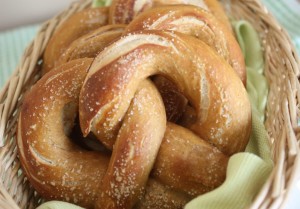
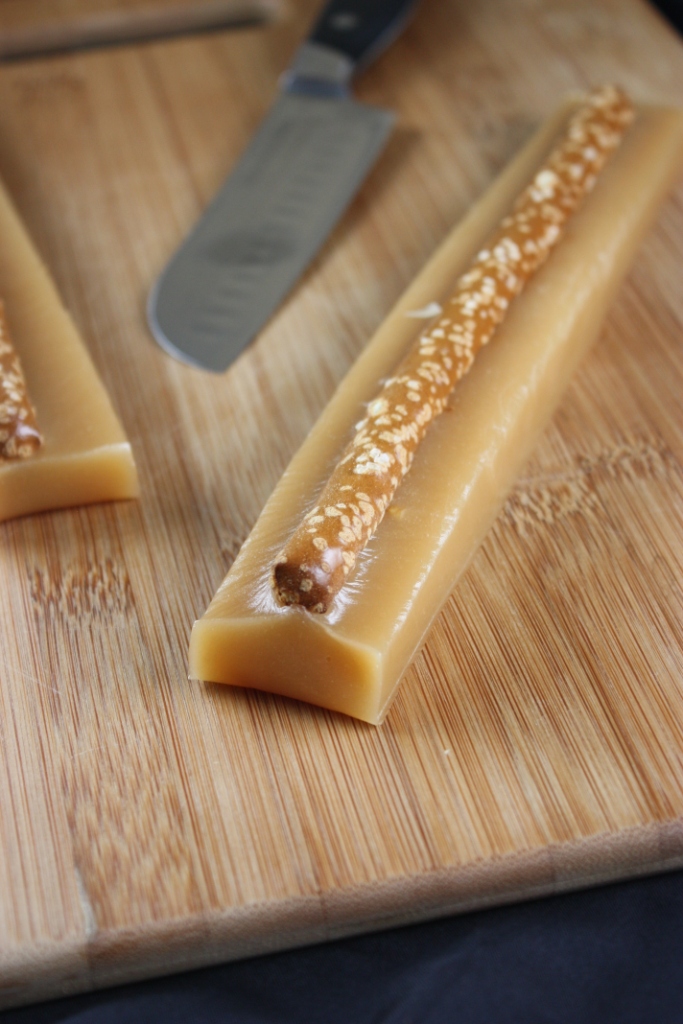
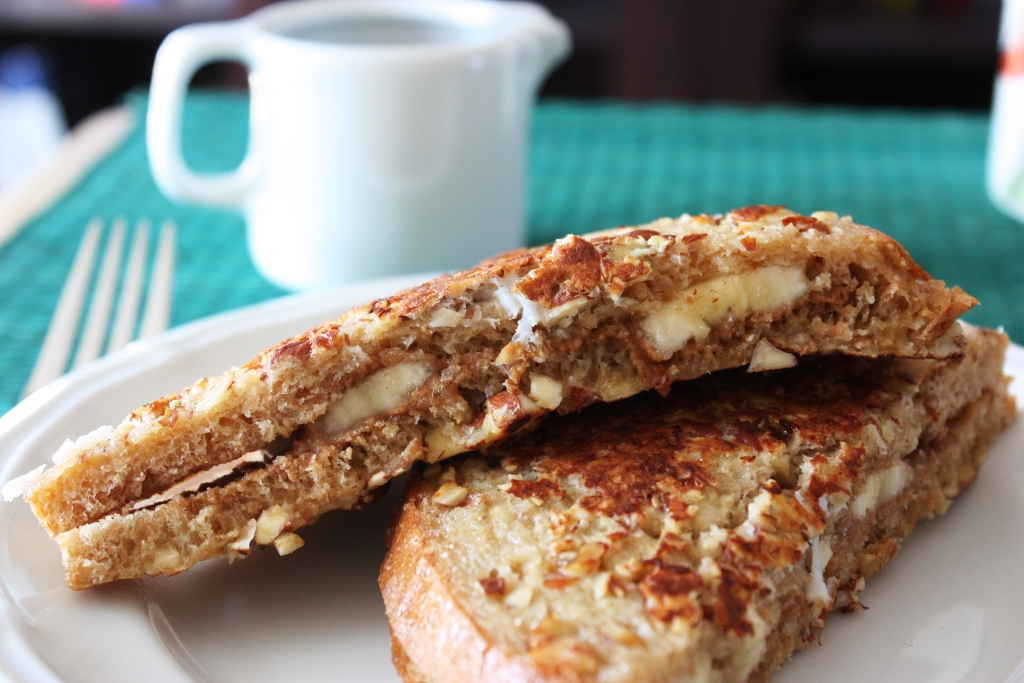
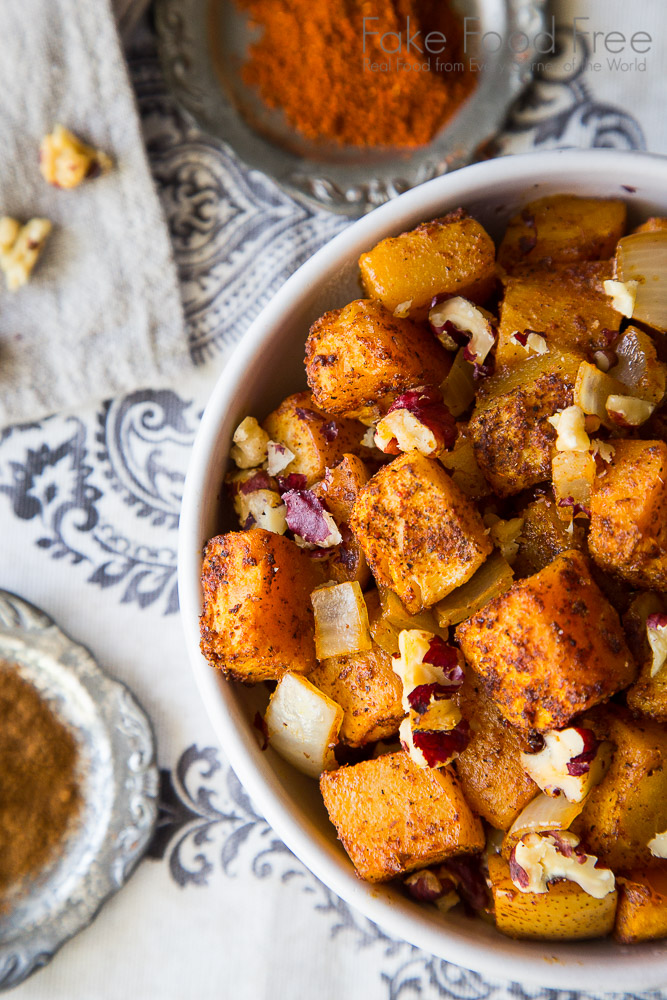

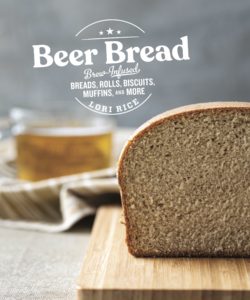
I had absolutely no idea about the origins and background of pretzels. Now that you’ve told us the story, I can totally see the reason for its shape! Yours look perfect – I just know that the glossy, golden exterior is hiding a soft, yeasty interior. It’s waiting for the mustard and beer!
Thanks for joining us in Eating Your Words – these pretzels are definitely a delicious reward for all of us!
Those look amazing, thanks for sharing the recipe. I hope you have a happy Easter!
A super cute entry! I remember seeing the episode of Good Eats with soft pretzels too…now I’m really craving one!
OOooh what a great snack idea! They look easy enough and so much better than those plastic-y looking pretzels at Target in the heated case…
What a treat of a blog post! I love the history and I will never see a pretzel again without thinking of a monk praying with folded arms!
Who knew that pretzels were so interesting? And I love the way you spelled out your word with them!
Wonderful history of pretzels–so interesting. Your pretzels look delicious and are perfect for Eating Your Words. 😉
Love homemade soft pretzels, and I agree, once you’ve had them in Austria and Germany, there’s no going back, especially when you couple them with the beer and mustard.
I have not made them in a while, but you have me craving them now.
Happy Easter.
These pretzels look excellent! I had no idea they were rooted in religion. I’ve been dying to make homemade pretzels as well and i’m so glad these are whole grain. Love how you turned them into an Eating Your Words submission…so creative!
SO INTERESTING! Thanks for sharing that little nugget of history.
I haven’t ever really been a soft pretzel fan, but these sound GOOD. I think I’ll add them to my list of items that I need to make 🙂
Your pretzels turned out magnificent! I also enjoyed reading about their origin (who would have thought-monks!) and checking your recipe I know that I will be tackling them some day!
oh wow! Those turned out so beautifully. I’m impressed with your pretzel making skills, Lori!
TN – Surprising isn’t it? I thought so.
janet – Thanks! Sending Easter wishes your way too.
kat – Thanks. I didn’t think I’d ever come up with anything!
Michelle – Ha! You are so right, they are plastic-y.
Joy – I know, I do the same thing! So symbolic.
Toni – It is one snack food that really has an interesting history.
Deb – Thanks! I was happy with my first attempt.
OysterCulture – I have a long way to go to perfect a German version, but that just means I have to go back to Germany. 🙂
Joanne – I was surprised they weren’t that difficult to make. Not really even all that time consuming.
Sagan – The made-at-home version is definitely better. 🙂
tasteofbeirut – Thanks! Let us know how they turn out.
Amanda – Ha! Thanks. Honestly I didn’t even know I had any. 🙂
THat was an interesting piece of information about the pretzels that you’ve shared. Now I see why it’s knotted/crossed the way pretzels are.
I always associate Pretzels with NYC. The first time I visited NY (long before migrating to the US many many years ago) the smell and the warmth of a freshly baked pretzel that greeted you in the cold streets of NY was comforting.
I went to Sweden for a couple of weeks ago, and I had some Swedish pretzels. They are really different but so great!
I have wanted to make pretzels for the longest time! And I just bought white whole wheat flour this week for the first time. It must be fate!
WOW!!! What an informative post on pretzels…
Very creative entry for “Eating your Words Challenge’
The Variable – Nachiketa
Crazy Over Desserts – The Variable, Nachiketa
clear
This is one snack that we’ve yet to develop a taste for!!The other things that we still need to develop a taste for are ‘smoked’ foodstuffs and the ‘cherry’ flavor(I mean the artificial flavor that seems to be so popular here-not the fruit as such).
Never knew the story behind pretzels!! Thank you for sharing.
L – This is beautiful! I’ve seen this recipe floating around, and your pretzel looks the best!